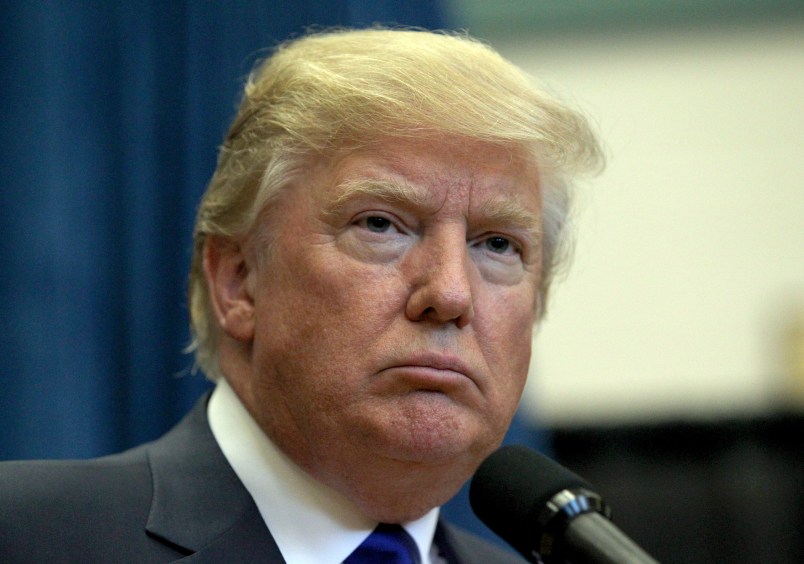We know now that Donald Trump is not only the numerical frontrunner in the GOP primary race but a very dominant one at that. And there’s no sign his strong plurality showing in pretty much all the state and national polls is going to change any time soon – though it’s important to remember there’s almost 6 months until the first voting. So I’ve been trying to game out some scenarios for how this race unfolds.
One element of conventional wisdom – which is still largely backed up with poll data – is that while Trump may poll in the 20s or even 30s he has an extremely high percentage of GOP voters who will not support him under any circumstances. Let’s assume that’s right and that it holds up until February. Is it not possible that Trump gets like 30% of the delegates and thus a plurality but not a majority going into the convention? With the increasing use of proportional representation contests that seems plausible, especially if you assume (a solid assumption, I think) that the rest of the field remains divided and no secondary dominant figure emerges as the anti-Trump.
But I had to remind myself of the changes the RNC made to the process after the long, drawn out contest that they believed (wrongly, I think) doomed Mitt Romney.
Here’s what they did. The first four states – Iowa, New Hampshire, South Carolina and Nevada – go in February. If you try to jump ahead of them you lose most of your delegates. The penalty is severe. Other states can hold their contests starting March 1st. But if you go on March 1st through March 14th, you have to hold a proportional representation contest. Starting March 15th, states can hold winner-take-all primaries. Since the benefit of being first past the post is much greater in a winner-take-all contest that should make the candidates focus more on them then those held in the first half of March.
At the moment, between those scheduled and with likely dates, it looks like most states and especially most big states will hold their contests in March. Looking at the list it’s hard to see how the nomination race isn’t effectively over by the end of March. And that would give the RNC what it wanted: an orderly by rapid process which would choose a nominee quickly and avoid the 5 to 6 month clown car escapade that Romney had to endure in 2012.
So how does this all affect Trump – potentially? It’s sort of a mixed bag. There aren’t that many big states that have committed to the first half of March when the contests have to be proportional. But conventional wisdom seems to be that those that haven’t set a date yet will opt for early March. That means Trump could pile up a solid number of delegates then. And if he’s still a plurality winner he could easily put away the nomination in the second half of the month.
Obviously, five months is a long time, blah blah blah. Trump could easily fall apart before then or the shape of the race could change. But it no longer seems like one outlandish remark will sink him or gut his support. That’s happened enough times already that I think we can be clear on that. But with such a divided field and no other strong candidates in the race, I’m less clear that it matters that so many Republicans say he’ll never be their choice. 25% to 30% could be plenty.






